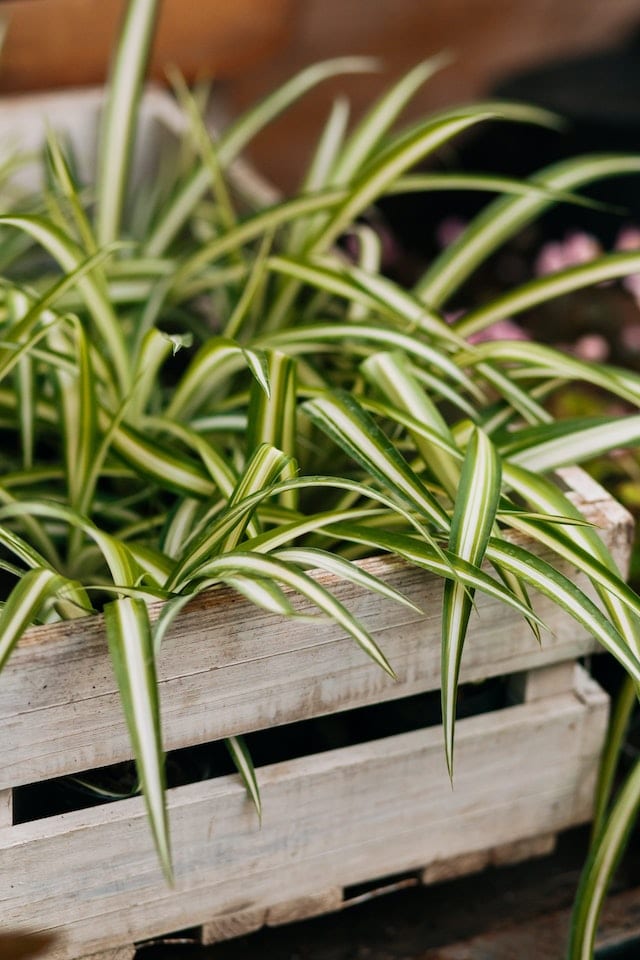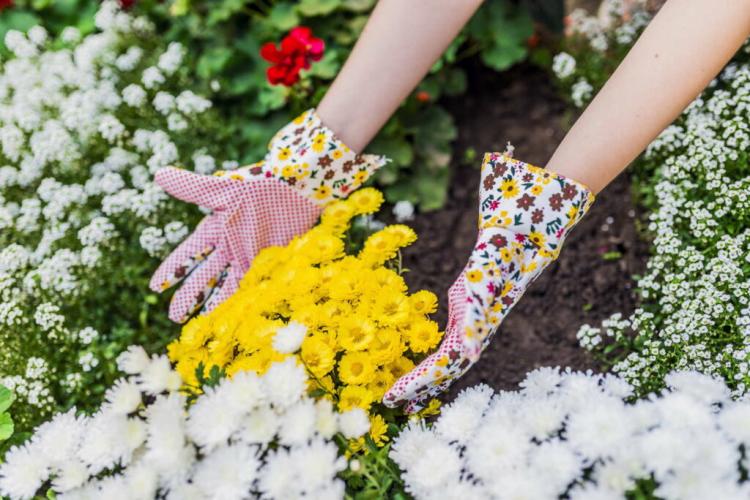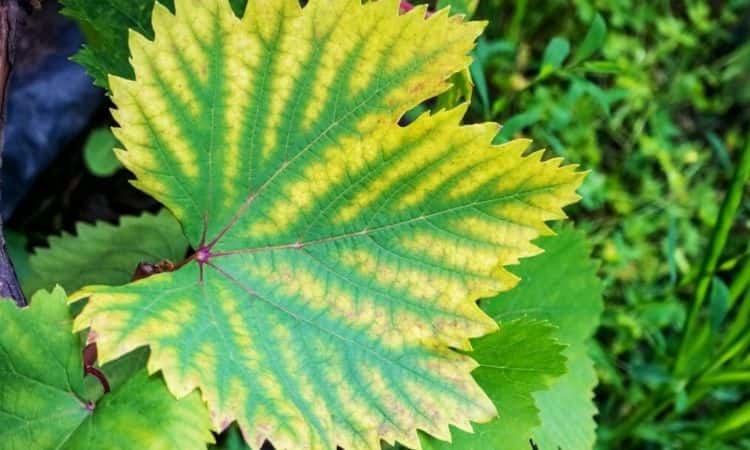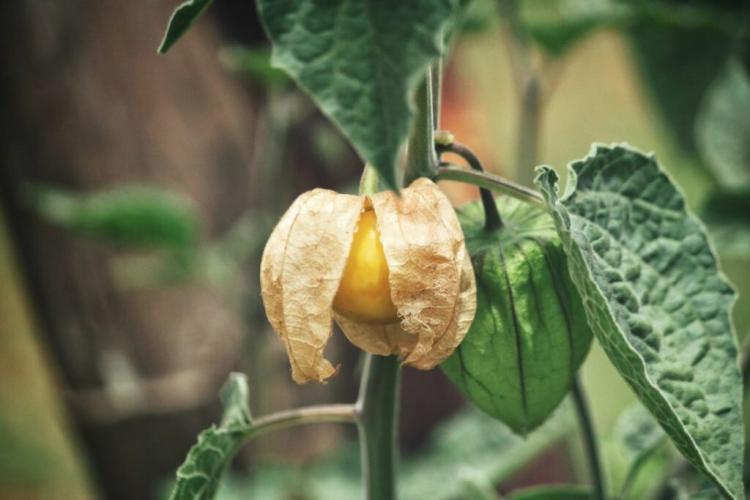Why is My Spider Plant Turning Yellow
Spider Plants, also known as Chlorophytum comosum are luxuriant green plants that are easy to cultivate, making them ideal for plant owners that are less attentive to taking care of plants or beginners that need to learn more about caring for such plants. Spider plants are among the most popular house plants, and they can thrive under any condition for a long period of time after which they may begin to show signs of defect.
Despite the ease with which you can grow these plants and leave them to cope on their own, you should be prepared to see them turn yellow if you neglect them for so long. With the right knowledge, you can keep these plants flourishing with little attention.
Why is my spider plant turning yellow
Table of Contents
The yellowing of leaves in a green plant is one of the signs that there is a problem. There are so many factors that could lead to your spider plant having a yellow leave. It could be due to overwatering or underwatering, overfertilization, improper lighting, excessive amounts of heat or humidity, pests, shock, or old age of the plant. We will discuss all these factors in detail below.
While spider plants can withstand some neglect and a range of atmospheric conditions, they do have their limitations. Your plant will flourish without yellowing when you understand these limitations and know what to do to solve them.
Here are some causes of yellowing in the leaves of your spider plant:
-
Lighting Issues Can Cause Yellow Leaves On Spider Plants
Spider plants are popular houseplants, and they gained their popularity as indoor plants in the late 1700s. Spider plants naturally thrive under the shades of bigger trees and plants, so they are well adapted to flourishing in bright indirect sunlight instead of under direct sunlight.
The first cause of your spider plant leaves turning yellow is when they receive too much light or too little light.
Too much light
When you expose your spider plant to too much direct sunlight, it will make the leaves of your spider plant to become yellow or brown (brown leaf tips). In a bid to protect themselves, the leaves of your Spider plants would curl inward, form brown leaf tips and become very dry. If the spider plant is positioned on your window sill where there is too much direct sunlight, move it away from the direct sunlight entering through your window or place a barrier between the window and the plant. What your Spider plant need is bright indirect sunlight.
Too little light
Also, your spider plant may be receiving insufficient bright indirect light wherever you place it in your house. Plants that do receive too little light may become feeble and wither. If you have a spider plant that is sitting in the corner of your house where there is too little light, then you have to move it to a place where it can get enough bright indirect light.
Some plants turn yellow as a result of environmental stress. Plants dislike changing their habitats; they need enough time to acclimate to new conditions. Suppose you recently made a significant modification to your spider plant’s environment. In that case, the leaves may briefly turn yellow and turn green again when it has adapted, and the lighting condition is favorable.
Always watch out for the amount of light that is available if you want a healthy spider plant.
-
Yellow leaves Can Be Caused by Temperature and Humidity issues.
Another reason your spider plant leaves turn yellow is when exposed to unpleasant temperatures or humidity.
Temperature
Spider plants prefer temperatures ranging from 50 to 80 degrees Fahrenheit. Spider plants are indoor plants; as a result, they do not need excessive heat or very cold temperatures. If you leave these indoor plants outside, they may encounter extremely hot or cold temperatures.
Humidity
Asides from temperature, another closely related factor that makes a spider plant turn yellow or brown is the humidity of the room or environment where you keep the plant. Spider plants prefer an average humidity level that is not too dry. Dry room conditions might cause yellow or brown tips on the leaves.
Air conditioners and heaters should always be placed far away from houseplants like the Spider plant. It is not a good idea to place the plant directly in the path of the air rushing from your vents (hot or cold air), even if the room temperature is comfortable.
Keeping your Spider plant close to things like an oven, fireplace, air conditioner, or computer might make the leaves turn yellow because of hot or cold air that is affecting it directly. So while positioning your Spider plant, ensure you place it in a spot where it can enjoy medium humidity.
Examine the area surrounding your spider plant and, if required, relocate it.
-
Quantity of Water Can Make Your Spider Plant Leaves Yellow.
Spider plants are hard and drought-tolerant plants that do not require much water to thrive. Most spider plant owners add too much water to their plants, resulting in an overwatered plant. A dried or no-water spider plant can also become yellow, although this is a far unusual occurrence because of the natural drought resistance of the plant.
Overwatering
Allow the spider plant’s soil to dry completely between the watering periods to prevent overwatering. When the soil in the top half part becomes dry, you can water the plant again and it will not be overwatered. To verify the dryness or wetness of the plant before adding water, you can put a stick or your finger into the soil. Water the Spider plant evenly until the water begins to drain from the pot’s drainage holes.
To prevent the roots of the Spider plant from sitting in water, empty any drop of water in the tray after some minutes of water drain.
How often should spider plant be watered?
There are no hard or fast rules regarding the frequency of watering a spider plant. This is because the size of the pot, the material of the pot, the plant size, the potting mix, and the growth conditions all have an influence on how frequently your spider plant has to be watered.
If the plant’s soil takes a longer time to dry up or drains slowly, you must be cautious and avoid overwatering. However, as a general rule, you can water your spider plant once every week; some experts also recommend it once every 10 days because the plants are not heavy feeders or often water-hungry plants.
You Might Also Like How To Make My Spider Plant Bushier
What does an over watered spider plant look like?
An over-watered spider plant would have yellow leaves and the edges of the leaves would be brown.
Can overwatering cause root rot?
Yes, excess water in the soil of your Spider plant can induce root rot which is one of the few maladies that spider plants are vulnerable to.
Root rot happens when water accumulates around the roots of your plant, decreasing the oxygen flow to the root. When the root rots, the bacteria and fungi in the soil will begin to grow, and they will use your plant’s root as a food source.
How can I treat root rot?
Root rot may be treated by repotting the plant into a properly aerated and well-draining potting mix and removing any infected roots. Consider using pots with proper drainage holes.
Underwatering
Underwatering can also lead to the yellowing of a spider plant. It is a less common cause of yellowing because spider plants are naturally drought resistant. So you can leave your plant without adding water for a few weeks and the leaves will not yellow. However, leaving it for months can lead to the spider plant turning yellow.
You Might Also Like Are ZZ Plants Poisonous To Dogs
-
Yellow Leaves on Spider Plants Caused by Excess Fertilizer
Overfertilization, or a buildup of fertilizer in the soil, can result in yellow leaves or nutrient toxicity in a plant. Spider plants do not need too many nutrients because they’re not heavy feeders; therefore, fertilizing once a month throughout the growing season is sufficient to have healthy plants.
Even if you do not feed a spider plant often, some fertilizer salts can accumulate over time in the soil and affect the healthy growth of the plant.
These accumulated salts might manifest as white crusts on top of the soil. This condition is extremely toxic to spider plants and is a typical cause of yellow or brown leaf tips.
How do you fix a yellow spider plant when it is overfertilized?
To ensure the healthy growth of your plant, flush the soil with enough water to wash away the salt. This process is known as leaching. It allows the fertilizer salts that have been deposited in the soil to dissolve and flow out from the pot’s drainage holes.
How can I flush my spider plant after overfertilization?
You can take your spider plant to your sink and open tap water on the soil for some minutes. Pour water carefully to avoid damaging your plant.
Even after flushing the soil with water, your spider plant may still need to be repotted every 1 to 2 years.
-
The kind of water used might cause spider plant leaves to become yellow.
Spider plants are susceptible to high levels of chemicals or salts in tap water, such as fluoride, chlorine, and soluble salts. Brown or yellow leaves will appear if these salts build up in your plant’s soil and penetrate the roots.
It is difficult to tell which salts are present in your tap water, so you might have to check the water quality report at any local water firm around you. If you cannot get any information about tap water, I propose you switch to distilled water, filtered water, or rainwater.
While distilled water has the lowest mineral content, any of the other alternatives are preferable to tap water. As long as they do not have excess minerals.
You Might Also Like Companion Planting With Turnips
-
Plant Pests Can Make Your Spider Plant Yellow
When you see a cut-out hole in the leaves of a spider plant, it becomes obvious that pests are wreaking havoc on the plant. If an insect bites a leaf, a little area will become yellow or brown over time.
What type of pest can attack a spider plant?
Aphids, mealybugs, spider mites, and whiteflies are among the pests that may attack a spider plant. Plants infested with spider mites frequently develop yellow leaves and you’ll notice this change in color before you see the bugs.
Where do pests attack spider plants?
If a pest wants to attack a spider plant, they usually do so on the underside of the leaf or near the base. A spider plant’s leaves are grouped in the middle, making it an ideal hiding spot for bugs.
-
Spider plant leaves become yellow as a result of shock
Plant shock happens when a plant encounters stress after changing its surroundings. The plant overcomes the shock gradually as it tries to adapt to its new surroundings. Spider plants can be shocked by any of these:
Newly repotted plant:
After repotting a plant, it is possible to encounter some root damage. The parts of the plant root that was damaged must acclimate to the new pot. The plant might e yellow immediately after repotting.
A plant transferred from the nursery to the house:
Plants are kept in optimum conditions and catered for by specialists at nurseries. This is not an easy condition to replicate when you take your plant home. The plant will need some time to get familiar with the new environment, so it would have yellow leaves initially before it adapts.
A freshly relocated plant:
If you relocated the plant to a different room or brought it inside from outdoors (or vice versa), it may undergo shock as it will need to adjust to the altered sunlight, humidity, and temperature conditions.
-
Spider plant leaves become yellow as they mature.
Spider plant leaves turn yellow as they mature or age. This is a natural aspect of a plant’s life cycle; when old leaves fade, new ones sprout. Nothing has to be altered if only a few leaves at the bottom become yellow. Simply remove the dead leaves to create a place for fresh growth.
You Might Also Like How Much Sunlight Does A Snake Plant Need
How To Prevent Yellow Leaves in Spider Plants
A healthy spider plant is expected to have a thick cluster of exquisite, softly curved leaves that is variegated in green. When you touch the plant, it should feel energetic and somewhat tough; the leaves shouldn’t be excessively delicate or fragile.
If the leaves on the spider plant begin to yellow, this indicates that something has gone wrong with the plant. We have discussed most of the reasons why spider plants turn yellow above; here, we will briefly look at some measures you can take to solve the problem of yellowing. Use this checklist to prevent a yellow Spider plant:
Examine the lighting of your plant
Spider plants require sunlight, but too much direct sunlight can result in yellow Spider plant leaves. Inadequate sunlight can also cause your plant to deteriorate and weaken over time, resulting in yellow Spider plant leaves. Make sure your plants are well positioned in a bright indirect light.
Assess the surroundings of your plant
A spider plant thrives in a semi-humid climate with temperatures ranging from 50 to 80 degrees Fahrenheit. Yellow leaves on your spider plant might be caused by it being placed near a heater or air conditioner. So ensure you check where you place the plant.
Check the moisture levels in your plant
The soil around your spider plant should be damp but not saturated. The plant will dry out if it is underwatered. Overwatering will result in root rot. Both problems can result in yellow leaves. So always check the soil water level.
Check for excess minerals in the soil
To prevent excess fertilizer salts in the potting soil, avoid overfertilizing and flush the soil out monthly.
Check the plant for pests
Aphids and Spider mites can lurk near the root of your plant and cause damage, which will make the leaves yellow. You can remove the pests with natural methods to protect your plant.
Remove any dead or dried leaves
Pruning yellow leaves or brown leaf tips can allow your plant to produce healthy leaves. Prune just a few leaves first and gradually remove others. Cutting all the yellow leaves at once might cause a shock in the plant.
Replant
Spider plants are notorious for outgrowing their containers. Look for a larger container that will allow your plant to thrive. If the spider plant grows too large for the new container, split the root ball to generate numerous little yet healthy spider plants.
Can yellow spider plant leaves turn green again?
Yellow leaves cannot become green again even after you make the conditions favorable. If the underlying issue is addressed (for instance, overfertilization is treated by flushing), fresh and healthy foliage will develop, and the Spider plant will look fantastic once again.
With the above reasoning, we may conclude that the yellowing process can be overcome. For house plants, the likelihood of yellow leaves returning to green is almost zero. A leaf may never return to its original hue (green) if it goes yellow; however, the yellowing process can be stopped if detected early,
Should I cut yellow leaves off spider plant?
Yes, it is better to cut off the yellow leaves in a spider plant. Removing the plant’s old yellow leaves will allow it to develop new foliage. When yellow leaves fall off, they make way for fresh leaves to grow.






